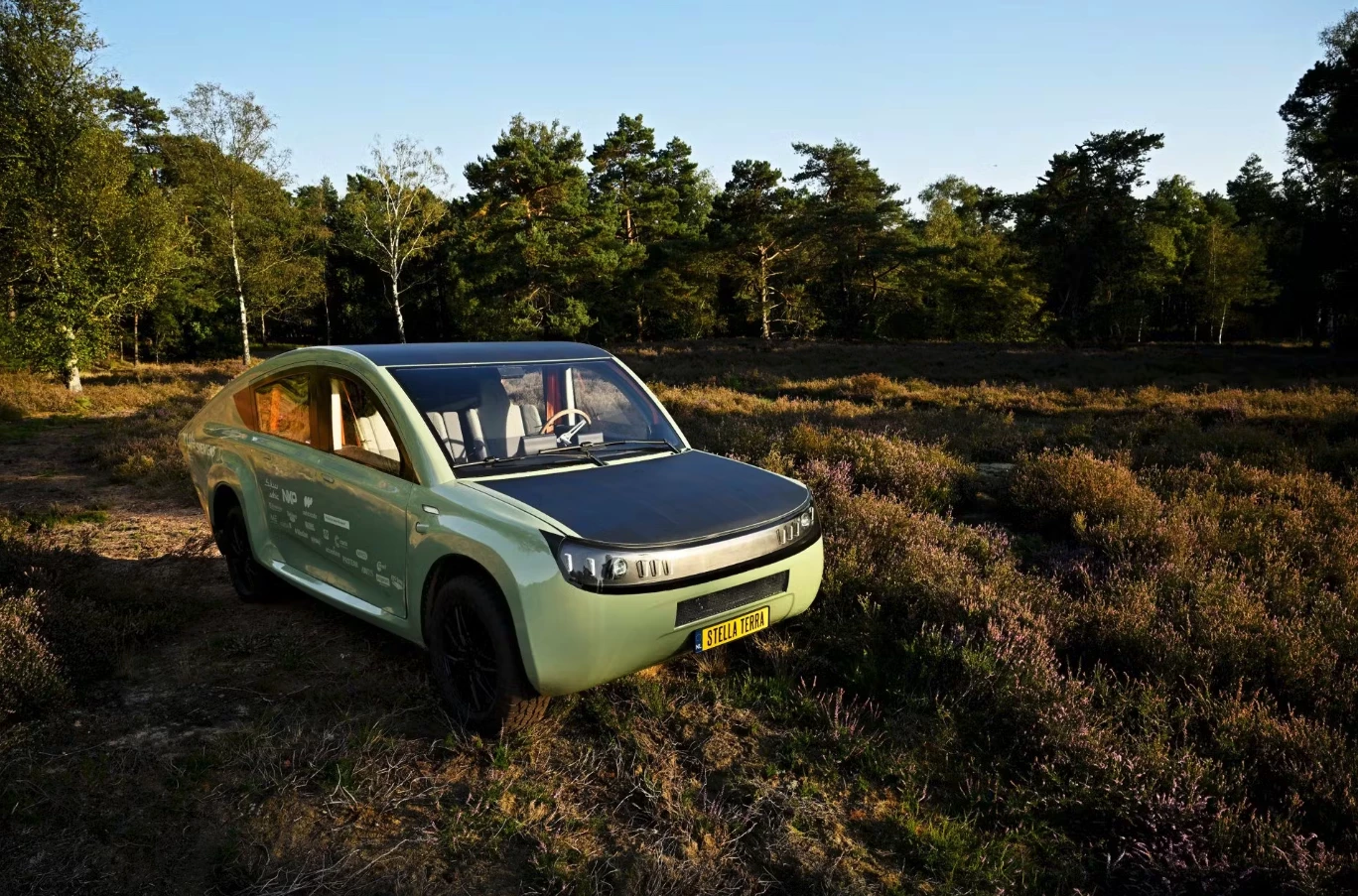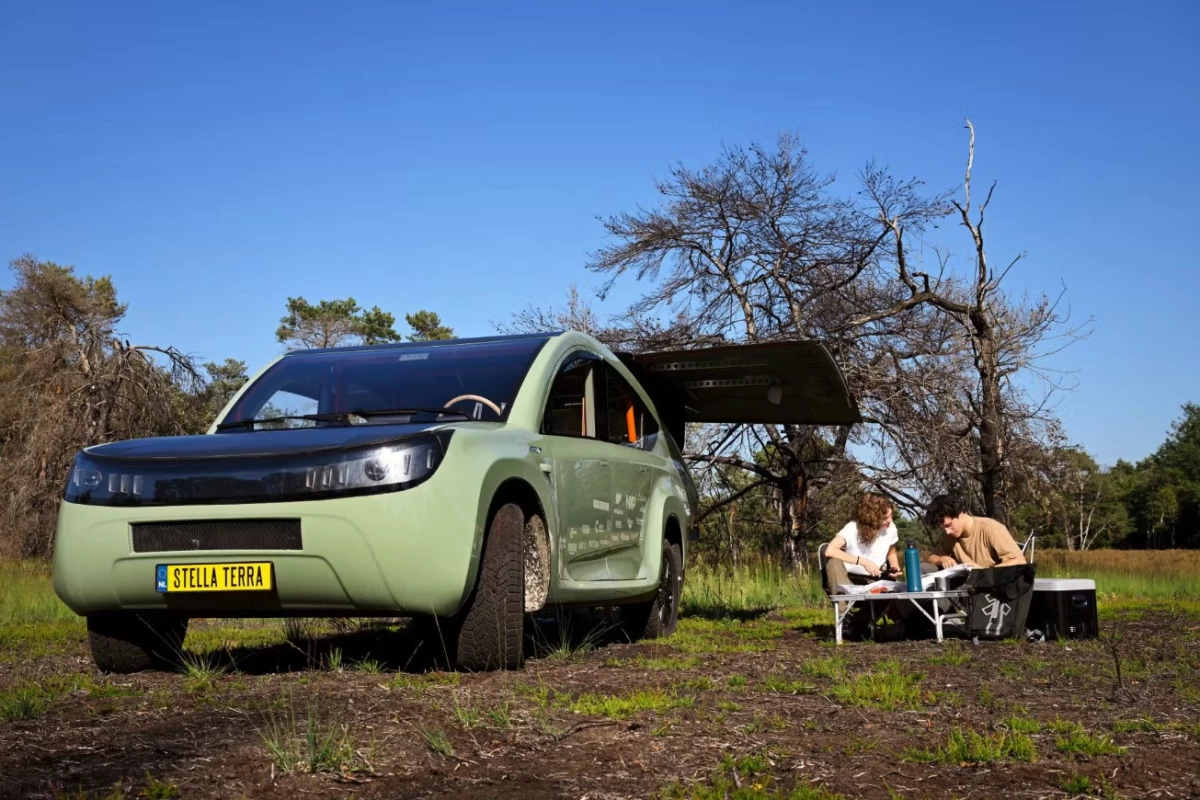As electric vehicle designers continue to figure out ways of making battery-powered cars more practical for everyday urban and suburban commuters, the Eindhoven University of Technology Solar Team has taken a few leaps forward into the future, showing how electric drive technology will one day provide for truly boundless mobility ... anywhere. The Dutch team made quite a stir in 2021 with its Stella Vita solar-powered RV, and it's followed up two years later with an all-electric off-road car capable of traveling over rugged terrain without the need to plug in thanks to an aerodynamic profile that incorporates an expandable solar charging system.
Solar EVs and e-RVs are very slowly becoming a reality, but their capability tends to fall well short of the type of limitless sun-fueled range eager road travelers and adventurers daydream about. The Maxwell Vanacea gets credit for being one of the first electric camper vans out there that can use solar-harvested energy to power its drivetrain as well as its onboard camping equipment. But the 1,560-W solar panel array covering the entirety of its long, flat Promaster roof adds just 20 miles (32 km) per (sunny) day to its top 250-mile (402-km) battery range and won't exactly get drivers much farther ... or pull them out of a dead-battery jam particularly quickly.
With its multi-panel expandable solar system and ultra-efficient design, the 2021 Stella Vita stepped well beyond that type of sun-driven RVing range, adding an extra 81 miles (130 km) per sunny day to the estimated 454-mile (600-km) base range of its 60-kWh battery. Solar Team Eindhoven estimated it could recharge completely after two to three sunny days of solar-charging in place.

The all-new Stella Terra sees Solar Team Eindhoven adapt its solarized EV expertise toward a separate application every bit as demanding as RV travel. The car is designed to run purely on solar power in remote off-road environments in which plugging in isn't even a distant option, using the sun to keep its four wheels rolling into canyons, over mountain passes, and through dirt and scree, all the way back to civilization (eventually).
"Stella Terra must withstand the harsh conditions of off-roading while remaining efficient and light enough to be powered by the sun," explains Solar Team manager Wisse Bos. "That is why we had to design almost everything for Stella Terra ourselves, from the suspension to the inverters for the solar panels."

The team has followed the tried-and-true formula it's used on past vehicles, keeping weight of the Stella Terra down as low as possible, in this case, 2,646 lb (1.200 kg). It has also sculpted the car for superior aerodynamic performance, crafting a long, sloping roofline reminiscent of the Lightyear 0, the solar car derived from Solar Team Eindhoven's World Solar Challenge competitor cars that is currently the market's most aerodynamic car with a 0.175 drag coefficient. The Stella Terra has a short front overhang and hood area but fairly beefy flanks owing to the off-road-ready construction and large tires below.
The Solar Team estimates the Stella Terra's range at up to 391 miles (630 km) with help from the solar energy available on a sunny day and says the experimental car tops out at 90 mph (145 km/h). Though the Terra isn't a full-blown camper like the Vita, the Solar Team has said it's designed to use its stored power for charging mobile devices and powering electric cooking appliances.

The Solar Team revealed the car last month and plans to take it to Morocco this month for more rigorous off-road testing over varied terrain. As with previous projects, the student team hopes that its latest design will catch the eye of someone in the automotive industry who can refine it into the next great marketable solar-electric vehicle.
Source: Solar Team Eindhoven




